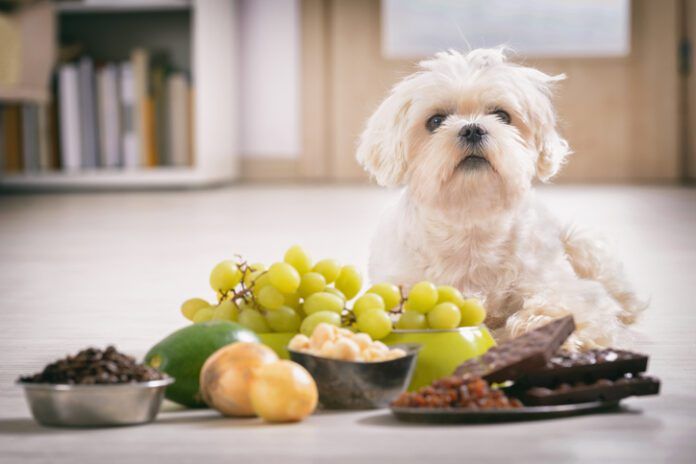This probably goes without saying, but always keep potentially harmful items in closets, drawers, or cabinets that your dog can’t open, not on a table or countertop or in a bag left on the floor. Make sure your kids understand these rules. And always supervise your dog’s play indoors and out. A curious puppy or dog can quickly find a way into even items that seem harmless — but can actually be quite harmful to pets. Here’s a rundown of common things you might have in your home.
- Xylitol. It’s a low-calorie sweetener that is derived from birch trees. It was first created in Finland during World War II, when sugar supplies were interrupted. Xylitol has a lot of dental benefits for humans, including the prevention of cavities, dental plaque, dry mouth, and bad breath. It also has the unique ability to remineralize tooth enamel. You can find xylitol in candy, nasal sprays, mouthwash, gum and as an artificial sweetener. Dogs, however, should not consume xylitol. In dogs, xylitol causes a rapid drop in blood sugar. This can cause seizures in dogs, which sometimes lead to death.
- Chocolate. While the rule that the darker the chocolate, the healthier it is may be true for people, the opposite is true for dogs. Chocolate’s problem ingredients are theobromine and caffeine, which dogs absorb through their gastrointestinal tracts too fast and put damaging stress on the liver. In dark chocolate, these naturally occuring ingredients are more concentrated and are likely to lead to serious problems, death included. Note: Cocoa powder, in some cases, can be as concentrated as dark or baking chocolate. Even cocoa bean shell mulch, a popular garden product, can be toxic when swallowed by chocolate-craving chow hounds.
- Grapes and Raisins. The toxicity of grapes to dogs is still not really understood by scientists. Reactions vary from dog to dog. Some dogs can eat grapes regularly and never have problems. Accidentally eating a few grapes probably won’t affect a dog of any size. But when ingested in siginificant quantities – as little as 2.5 ounces – this fruit can cause kidney failure.
- Onions. Onions and their cousins, garlic, are rich in a compound called thiosulphate, which is toxic to dogs. Being much more thiosulphate-potent than garlic, onions pose a threat to dogs if they eat just a single serving – about one good-sized onion. Thiosulphate causes hemolytic anemia (“Heinz factor”) in dogs, a condition that bursts red blood cells. Symptoms of hemolytic anemia can develop in a range of time – generally within a few hours, but can also be after a few days. Signs of hemolytic anemia include depression, weakness, no interest in food, vomiting and diarrhea. In a progressed case, the dog’s urine will become red from dam-aged blood cells. As oxygen-carrying red blood cells die off and leave the dog’s body, the dog becomes suffocated.
- Garlic. Garlic is a tricky one because when used topically and sprinkled over food, it is great for dogs. It fights ear infections, internal infections, boosts immune systems and lowers blood sugar. But it also contains thiosulphate. Many holistic veterinarians and health care experts believe that feeding doses up to 1 small clove of garlic per 20 pounds of body weight per day are not likely to pose problems for dogs. When uses topically for wounds or ear infections, it is harm-less. If your dog were to eat a whole head of garlic, on the other hand, refer to the earlier section on onions.
- Macadamia Nuts. The good news is that we have no documented cases of macadamia nut poisoning that has led to death. It alleviates after it passes through the dog – in around 12 to 36 hours. The bad news is symptoms are dramatic. Hind-end weakness, lethargy, depression, vomiting, and diarrhea all come after eating as little as 1 gram of macadamia nuts per pound of a dog’s body weight.
For a more comprehensive guide on keeping your dog safe, download Dog Dangers now.






